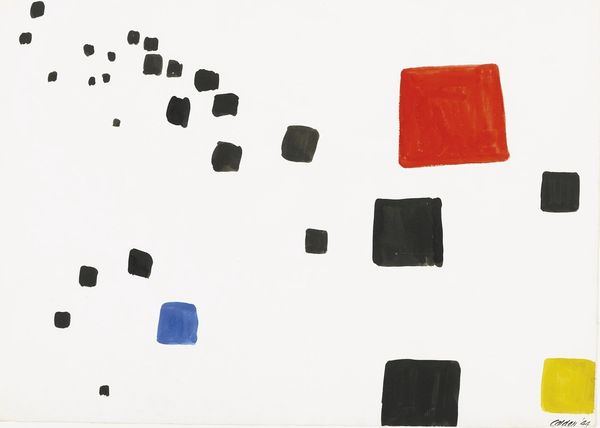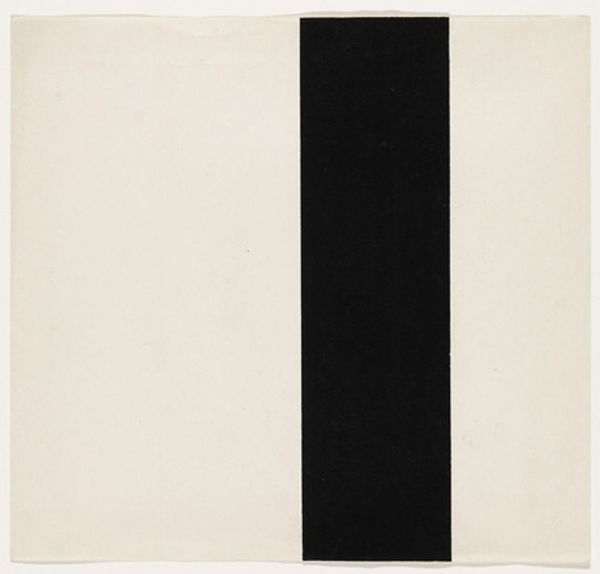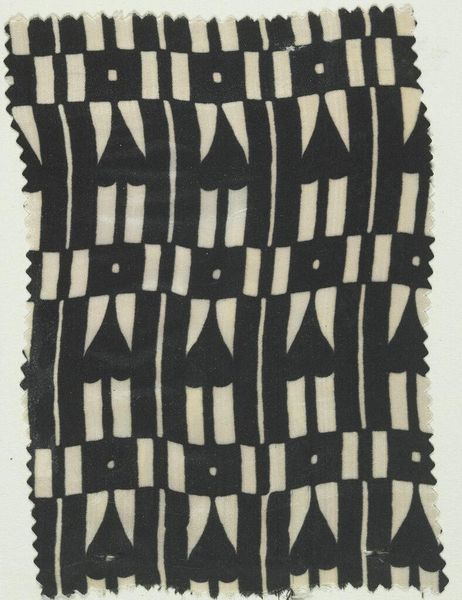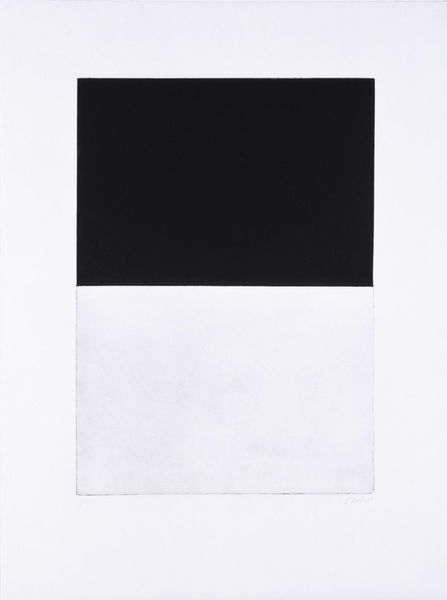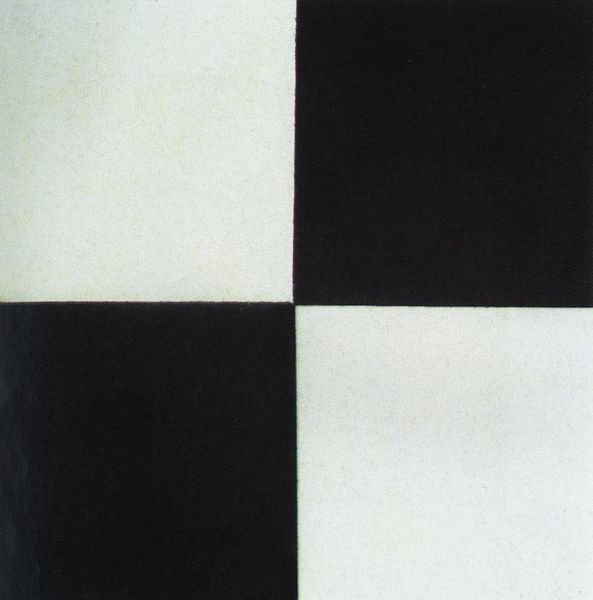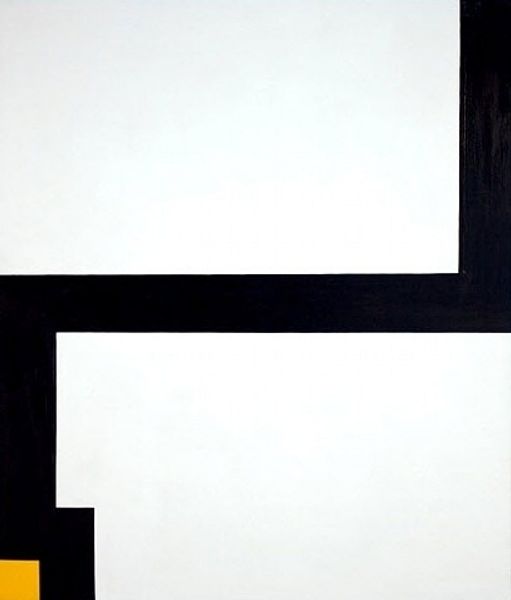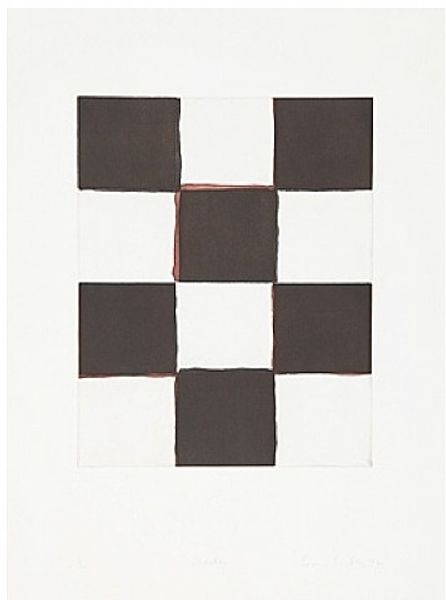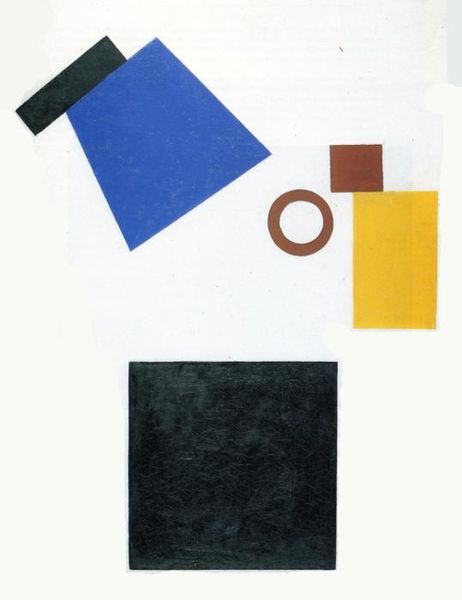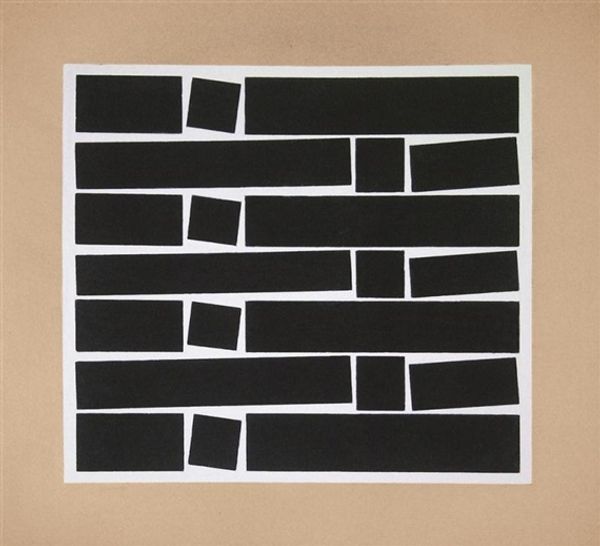
collage, paper
#
collage
#
pattern
#
charcoal drawing
#
monochrome colours
#
paper
#
tonal
#
acrylic on canvas
#
rectangle
#
dada
#
geometric
#
abstraction
#
monochrome
Copyright: Public domain US
Curator: Looking at this artwork by Jean Arp, a collage constructed in 1917, one is immediately struck by its starkness. The work, titled "Squares or Rectangles Arranged According to the Laws of Chance," utilizes torn paper in blacks and whites. Editor: Stark, yes, but also playful! It's like the squares are doing a little dance across the canvas. I love the raw edges of the paper—makes it feel spontaneous, accidental, but somehow perfect at the same time. Like catching snowflakes, each one individual and perfect. Curator: It is crucial to acknowledge the piece was produced within the Dada movement. Dada rejected reason and logic, embracing nonsense, irrationality, and intuition. Arp relinquishing control, dropping the squares and letting them land where they may, directly reflects Dada’s anti-art stance. It's a purposeful embrace of chance and a challenge to traditional artistic creation. Editor: Exactly! It’s pure, rebellious chaos—beautifully arranged chaos. The way the shapes interact—the tension between the black and white—it's so simple but holds so much. There’s an unexpected balance that emerges from the randomness. It makes me question how much control we really have, not just over art but life, too. It is a little Zen moment. Curator: That concept of surrendering to chance also challenges the role of the artist. Arp's method begs the question: is the artist truly creating or merely curating the results of an arbitrary process? The beauty becomes almost secondary to the statement. Editor: Maybe the artist is both? Maybe creation lies in choosing to let go, to collaborate with chance. The artist provides a setting and sets conditions but relinquishes authoritarian command. Curator: Considering the period – the height of World War One – it's tempting to see the element of chance as reflective of the pervasive uncertainty of the time, a metaphor for lives disrupted and controlled by chaotic, seemingly random events. Editor: That’s an interesting point; it suggests that the randomness is not just an aesthetic choice, it echoes the emotional and cultural atmosphere during wartime. Looking closer now, the torn edges make it seem a little violent, distressed... it amplifies those raw, unpredictable feelings. Curator: Ultimately, "Squares or Rectangles..." provokes contemplation about artistic control, intentionality, and how disorder shapes meaning. It encapsulates Dada’s spirit succinctly. Editor: For me, it's a reminder that beauty and order can be found even in randomness if you allow yourself to see it. Something profoundly liberating in that sentiment.
Comments
No comments
Be the first to comment and join the conversation on the ultimate creative platform.

